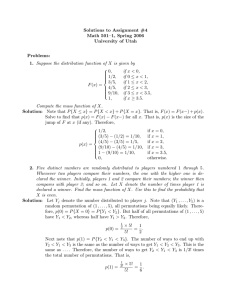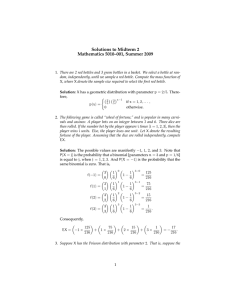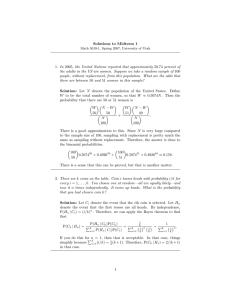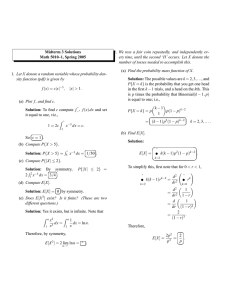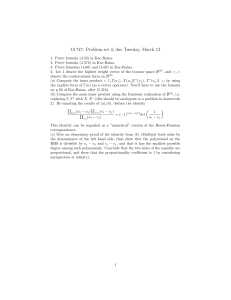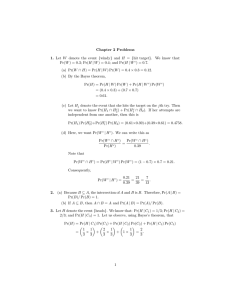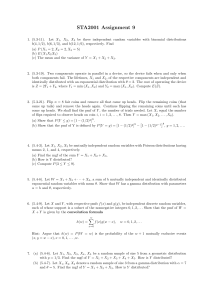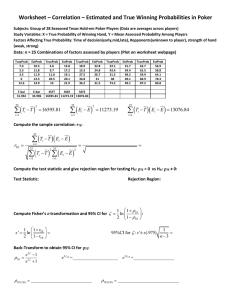Reading and Problem Assignment #4 Math 501–1, Spring 2006 University of Utah
advertisement
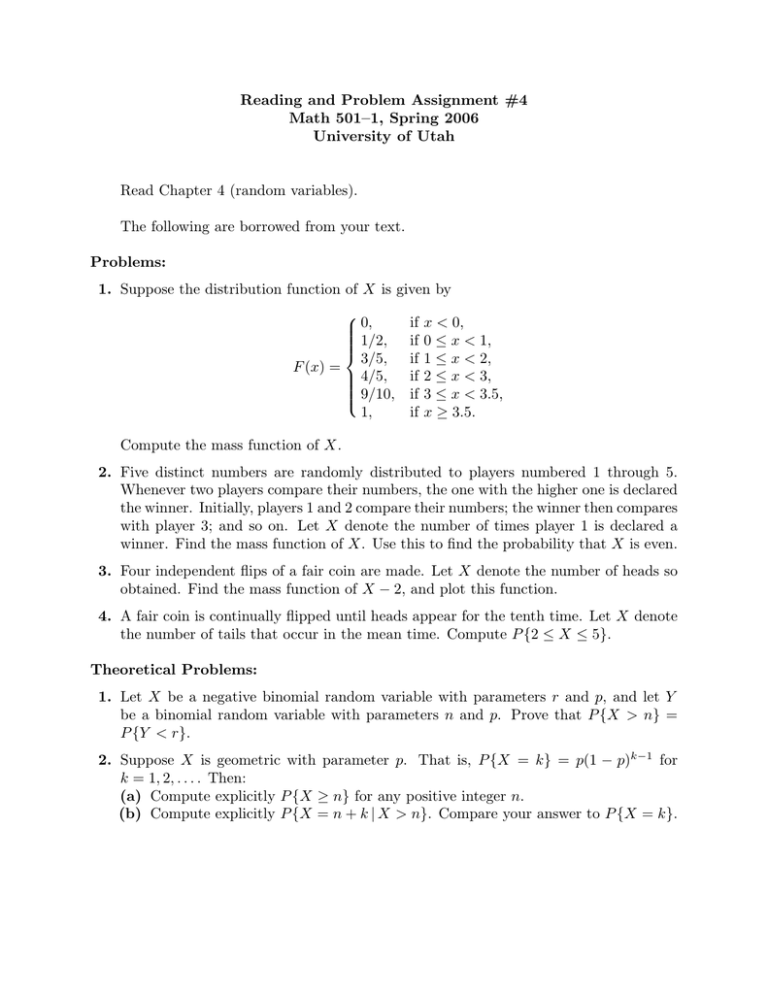
Reading and Problem Assignment #4
Math 501–1, Spring 2006
University of Utah
Read Chapter 4 (random variables).
The following are borrowed from your text.
Problems:
1. Suppose the distribution function of X is given by
0,
1/2,
3/5,
F (x) =
4/5,
9/10,
1,
if
if
if
if
if
if
x < 0,
0 ≤ x < 1,
1 ≤ x < 2,
2 ≤ x < 3,
3 ≤ x < 3.5,
x ≥ 3.5.
Compute the mass function of X.
2. Five distinct numbers are randomly distributed to players numbered 1 through 5.
Whenever two players compare their numbers, the one with the higher one is declared
the winner. Initially, players 1 and 2 compare their numbers; the winner then compares
with player 3; and so on. Let X denote the number of times player 1 is declared a
winner. Find the mass function of X. Use this to find the probability that X is even.
3. Four independent flips of a fair coin are made. Let X denote the number of heads so
obtained. Find the mass function of X − 2, and plot this function.
4. A fair coin is continually flipped until heads appear for the tenth time. Let X denote
the number of tails that occur in the mean time. Compute P {2 ≤ X ≤ 5}.
Theoretical Problems:
1. Let X be a negative binomial random variable with parameters r and p, and let Y
be a binomial random variable with parameters n and p. Prove that P {X > n} =
P {Y < r}.
2. Suppose X is geometric with parameter p. That is, P {X = k} = p(1 − p)k−1 for
k = 1, 2, . . . . Then:
(a) Compute explicitly P {X ≥ n} for any positive integer n.
(b) Compute explicitly P {X = n + k | X > n}. Compare your answer to P {X = k}.
